October 6, 2016, 4:10 pm

Hello Friends,
I’m finally able to offer on my website many of the kits that I use in my classes. Look for them under Ms Bobbi’s Kits of the Month in the shopping section of my website. Each kit is complete with everything you need to complete the project. If you need something that’s not in the kit like stuffing it will be clearly marked on the kit. All that’s needed is an enthusiastic sewer and a bit of creativity!
Perfect for gift giving for birthdays, holidays, or other special occasions, these sewing kits are great for building skill in both hand and machine sewing. Great for students in my classes as well as homeschoolers and teachers wanting to teach beginning sewing skills in their classes. Wonderful for Girl Scout Troops, 4-H groups, Indian Guides, and play dates! Kits are also a great addition to Makerspaces in libraries, schools, and elementary classrooms.
Kits for this Month are Halloween projects.
A Pumpkin Pillow with faces to cut for my young sewers and Pumpkin or Spider Pouches for my older kids. More kits coming as I continue to add to my collection. Enjoy!
Learning to Sew and Loving it!
September 19, 2016, 9:00 am
Dear Sewing Friends,
As I’ve told you before I spend hours each week choosing fabrics, trims, and notions so that each of my students can choose the perfect kit to stitch in class. Often many of you find it hard to choose just one kit to make and would love to sew more but there isn’t enough time in class.
I got to thinking, why don’t I make extra kits and put them on my website? You get to sew more projects and it’s easy peasy for your parents (no trip to the fabric store needed).
Whether it’s hand sewing or machine sewing everything would be included and ready for you to stitch. If it’s a project from Pinterest or the Internet I’ll send you to their site for directions. If it’s from a book, I’ll let you know the title to look for on my site. My designs can include both materials and directions. Yes, this will be so much fun!
I could make some kits with a variety of fabric, some zippers, several spools of thread, some buttons and trims and you could create your own creations! I could even put together kits personalized by you! Homeschoolers could use the kits to learn how to sew. Oh, the possibilities are endless!!!!
So, my first kits will be up at the end of this week and we’ll see how it goes. Here’s to another fun year of sewing!
See you soon,
Ms Bobbi
Tags: Buttons, creative kits for sewing, fabric, sewing kits, sewing kits for kids, sewing notions, sewing pillow projects, spools of thread, trim, zippers Category: Begin to Sew, Halloween Sewing, Home School, Homeschool, Homeschooler, National Sewing Month, Sewing for Children, Sewing for Kids, Sewing Kits |
Comment
September 15, 2016, 3:57 pm
Hello Sewing Friends!
I’ve been really busy planning, organizing, and making kits for my classes this year! Whew, it’s a big job but totally worth it. I want all my sewing friends to have a wonderful and creative year with me stitching great projects and having fun doing it.
Our first lessons together will be a lesson on basic hand and machine sewing. For some of my friends this will be a review but for others it will be the first time they are learning about sewing. We’ll be using 2 books to help us learn these skills and I wanted to show them to you before our first class.
For hand sewing we will be using “The Amazing Stitching Handbook for Kids” by Kristin Nicholas (C&T Publishing $16.95). Lots of pictures and some great projects which we will stitch several from the book as class projects during the coming year.
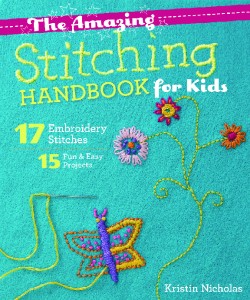
For machine sewing we will be using the Second Edition of “The Best Sewing Machine Fun for Kids” by Lynda Milligan and Nancy Smith (C&T Publishing $16.95). I have used this book in my classes for the past 12 years. The new edition has been updated with newer pictures and graphics, 37 projects and activities, and a great reference book for my students to learn how to sew.
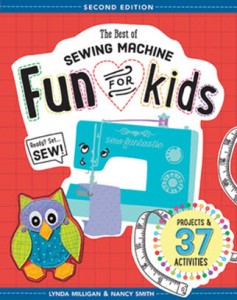
These books are on my website if you want your own copy of “The Amazing Stitching Handbook for Kids” and/or “The Best of Sewing Machine Fun for Kids” along with lots of other kid friendly Fun Stitch Studio Books. Just go to www.fascinationinfabrics.com. Click on “Shop” and scroll down to either “Children’s Sewing Books” or click the Banner “Cool Stuff for Kids”.
See you soon!
Ms Bobbi
Tags: embroidery, fun for kids and sewing, sewing book, sewing kit, sewing machine, sewing projects, stitching Category: Home School, Sewing Book Sale, Sewing for Children, Sewing for Kids, Sewing Kits |
Comment
September 15, 2016, 3:10 pm
Hello Sewing Friends!
It’s just about time to start sewing classes with Ms Bobbi and I am just sew excited!
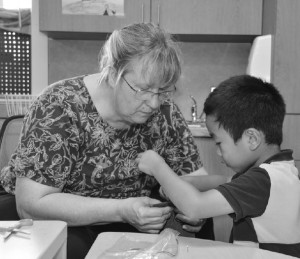
This year I have 3 different classes for you:
“Sewing on the Go” is my class for my students in grades 2 through 6. I’ll have some beginners mixed in with my returning sewers. I have lots of great hand and machine projects for the coming year so be prepared to have lots of sewing fun!
My “Junior Sewing on the Go” is my class for my Kindergarten and First Graders. We’ll have sewing fun mixing a lot of different types of hand sewing projects with a bit of machine sewing here and there to get you interested in the sewing machine.
And finally, my “Sewing Sampler Class” for my 4 and 5 year olds. These students are soooo excited to learn how to sew by hand and they are so proud of everything that they sew. And you never know when a sewing machine lesson might happen in a class or two…We’ll see how goes!
Click Here for Tower Hill Class Schedules and Information
Click Here for Tatnall Class Schedules and Information
If you can’t come to my classes in the extended day programs of Tower Hill or Tatnall, just give me a call and we’ll sign you up for private or semi-private lessons in my home or yours! Everyone can join in the fun of sewing!
Learning to sew and loving it!
Ms Bobbi
Tags: after school programs, extended day programs, fall classes, sewing class for kids, sewing classes, tatnall, tower hill Category: Begin to Sew, Home School, Homeschool, Homeschooler, Kids Projects, Sewing for Children, Sewing for Kids |
Comment
February 22, 2016, 8:16 pm
I love books! All kinds of books but especially books about (you guessed it) sewing and the needle arts. I have a huge library in my office with books I have purchased from the time I was a teenager in high school. I love looking through the books in my library to get inspiration for upcoming classes or to answer a sewing question. They fill me with creativity and inspiration and they make me smile. I would not part with any of them but I am constantly looking for new books to fill my already stuffed shelves.
It is because of my love for books and my constant need to learn new sewing disciplines that I carry lots of books on my website. I really am a softie when purchasing books for Fascination in Fabrics and over the years I have gone a little overboard in my purchasing. I want to make way for more books so I am having a Blowout Book Sale on my site effective immediately! Check out the books available for only $6.95. These books are mostly from C&T and were originally $9.95 to $32.95. The sale is limited to stock on hand and can be purchased on a first come, first serve basis. Great values on a great selection of mostly quilting and craft books. Check my website now!

Sewing books can be full of pictures and information that can really teach you a skill if you can’t take a class. They can familiarize a sewer with terminology and techniques in a variety of disciplines and they provide a ready source of information at your fingertips. And even with the web at our 24/7 disposal there is nothing like perusing a good book while sitting on the couch and sipping a drink of choice!
The web may help you find a sewing book that you are looking for or a sewing website like mine that will give you personalized service to help you find a book if they don’t carry it. Book stores like Barnes and Noble are always adding new books to their collections. Libraries are a good source of finding sewing books and you’d be surprised how often they add to their collections. Whatever you do, always remember that there are all kinds of resources out there for you to take advantage of when you want to learn something new. Books are a great addition to any sewers stash!
Until next time,
Bobbi
February 22, 2016, 8:06 pm
My sewing students love to talk and laugh while we’re sewing during classes. One topic that they are always talking about are birthday parties! Now when I was their age, a birthday party was 8 -10 little girls (and sometimes boys) getting together and playing pin the tail on the donkey and eating ice cream and cake. And while those kind of parties still exist, they don’t seem to be the norm any more.
Now the girls have themed parties and go to hair salons to have their hair done or to a Sky Zone to jump on trampolines! The possibilities are endless and really the sky is the limit. And, because of this trend in birthday parties, I have been asked more and more if I would like to be the entertainment for a “sewing birthday party”.

For my sewing parties I come with all the equipment, sewing machines (if we are not hand sewing), and sewing kits that we need for each individual party. I start with a short sewing lesson and then we sew a project that I have all ready for them to sew. Everybody takes home a finished project. After my lesson they go into eat and open up presents. I clean up and say my goodbyes. My gift to the birthday girl or boy is a gift certificate for a private lesson in my home studio.
So, the next time you’re planning a birthday party for your child, think about having a sewing birthday. Your child will love it and so will you!
Until next time,
Ms Bobbi
February 22, 2016, 7:51 pm
My goodness 2015 went fast! It’s January and time to think about Spring Sewing sessions and Summer Sewing Camps. The Camp Fairs are right around the corner…..
This year I am excited to again be at Tower Hill School for most of the summer. I will be offering 4 camps and your sewer can join me for either a half day or a full day. Many of my working parents let me know that they needed a full day of camp so now your wish is my command!
I will also be running 2 sewing camps in August at Tatnall and they will also have the option to join me for a half day or a full day. And, finally I am running 2 camps at Cab Calloway Summer School of the Performing Arts for campers that are in Kindergarten through Second Grade. It’s gonna be a busy summer but sew exciting!!!!
Here’s the link to click to my summer camps. Register early for best selection!

Summer is often the best way for your kids to experience the joys of sewing. Classes are small and the atmosphere is more laid back than during the busy school year. Kids can choose a variety of sewing disciplines based on their interests. During the week they will be gain confidence in their ability to finish each project and use their creativity to personalize their projects based on their individual personalities. Wherever you may live be sure to investigate your local sewing shops or schools for sewing camps in your area.
Until next time,
Ms Bobbi
Tags: Register for Summer Sewing Camp, Sewing Camp, Sewing Camp Registration, sewing projects, Summer Sewing, Summer Sewing Camp Category: Begin to Sew, Beginning Sewing Projects, Kids Projects, Learning to Sew, Learning to Sew and Loving It!, Sewing for Children, Summer camp Projects |
Comment
December 2, 2015, 5:10 pm
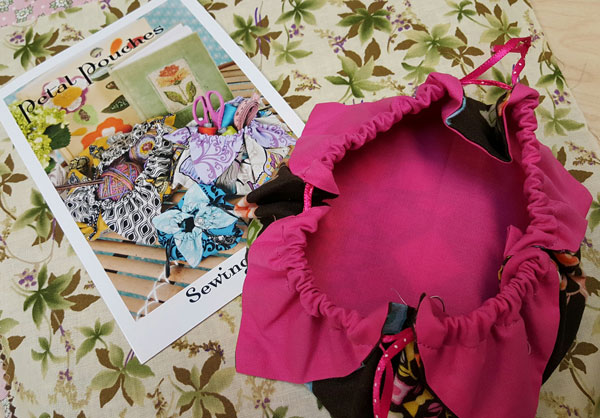
I love the Pattern “Flower Pouches” by Valori Wells. My students loved them too! How can stitching a simple square and turning each corner back and gathering it look so cool and really look like the petals of a flower? It’s amazing and another great container for putting in a special gift for someone you love (actually makes it more special because you’ve made the pouch)!
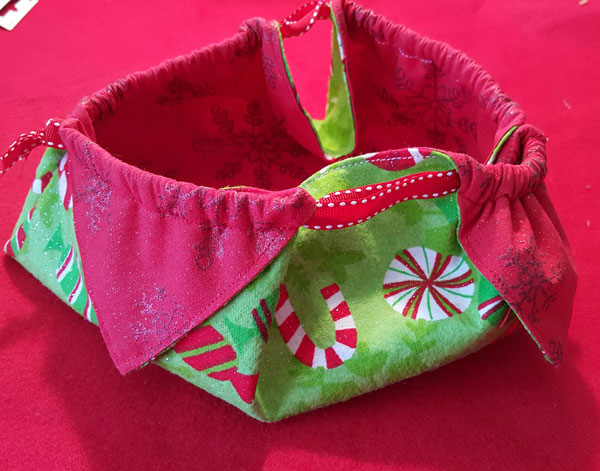
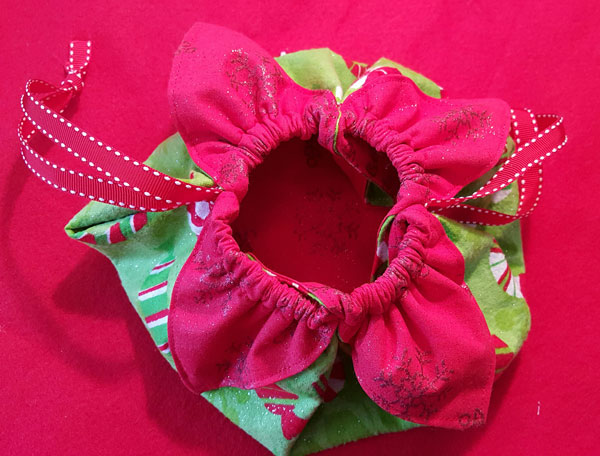
Start with the sewing card “Petal Pouches” by Valori Wells. Choose the size of your square from the pattern (there are 3 sizes using a 10” for a small bag, 15” for the medium bag, and 18” for the big bag). You might also like to experiment with the size to fit your gift. You’ll need 2 fabrics and ribbon for your gathers that fit through your casings. Note: I preferred to cut a larger piece of ribbon for the bags to have longer pieces to tie)
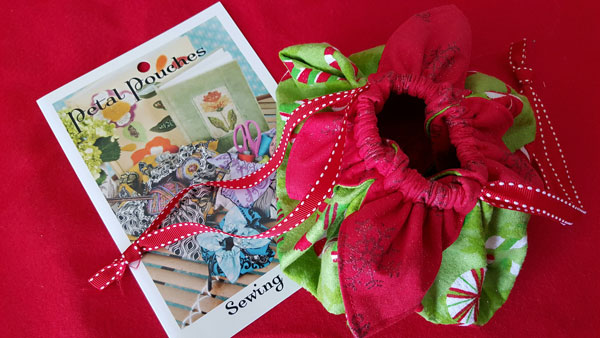
The directions are easy to follow and the finished project so adorable. Make in a variety of prints and solids including some Christmas prints for the holidays! You can find the Sewing Card “Petal Pouches” by Valori Wells on my website in the Marketplace under Cool Stuff for Kids!
Happy Stitching…
Bobbi
December 2, 2015, 4:59 pm
Kids just love making pillows! For some of my students I think the best part of making the pillow is stuffing it! So I thought let’s make some Christmas pillows and ornaments and have fun stitching and stuffing them!
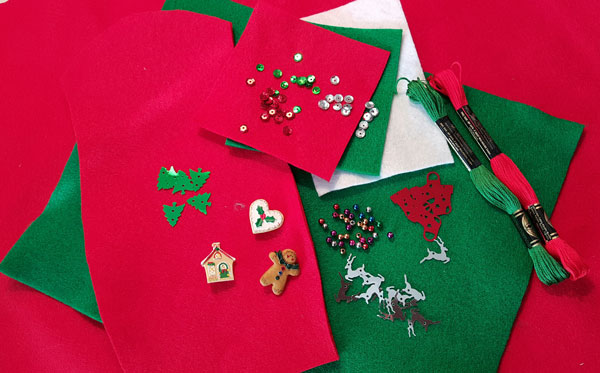
Because I again wanted super easy projects I cut squares from felt and fleece. These fabrics don’t ravel and seams don’t have to be inside! Cut squares to the desired size. Add any appliques with simple hand stitches. Add embellishments like sequins, buttons, and ribbons. Pin the front of the pillow to the back and be sure to leave a hole in the middle of one of the sides to stuff.
You could use the machine to sew the sides if you would prefer, but I love these pillow projects from felt to practice hand sewing. Stuff the pillow lightly and stitch up the opening you left for stuffing. Your pillow is done!
If you are making an ornament, just slip in a piece of folded ribbon at the top of the ornament and stitch all 3 layers at once (top felt, ribbon in between, and bottom felt).
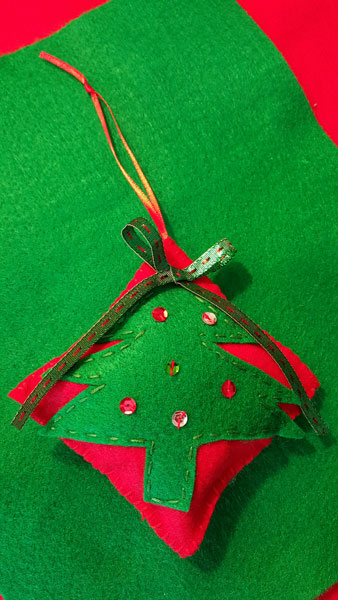
For more ideas and creative stitches for your projects check out “ The Amazing Stitching Handbook for Kids” by Kristin Nicholas available on my website under Fun Stitch Studio Books by C&T Publishing.
Until next time…
Bobbi
Tags: Buttons, C&T Publishing, Christmas Pillows, Fun Stitching, Holiday Pillows, Kristin Nicholas, Making Pillows, Pillow Projects, Ribbons, Sequins, Stitching Handbook Category: Holiday Sewing Projects, Kids Projects, Projects, Sewing for Children |
Comment
December 2, 2015, 4:52 pm
Now that Thanksgiving has come and gone, it’s time for my young students to spend the next few weeks leading up to Christmas and Hanukkah making gifts for family and friends. I decided to share a few of these on my blog.
The Fleece Pouch is a project that I use in all my beginning classes. It is simple enough for my kindergarten crowd and all the kids get to practice a straight stitch, running stitch, and sewing on a button. As an extra I add on an applique’ when time permits. The kids love this little cutie!
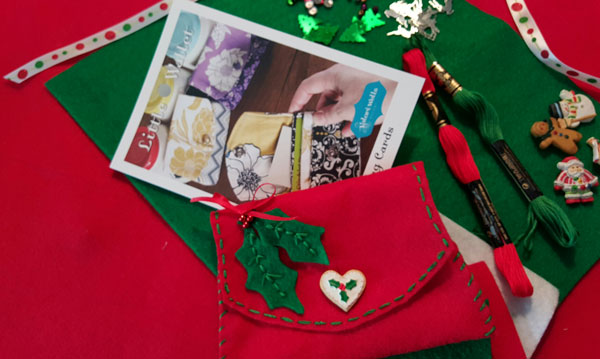
The pouch was inspired by the Sewing Card from Valori Wells called “Little Wallets”. The pattern was a little too hard for my younger kids so I traced the shape of the pouch and then folded the bottom of the pouch back up on itself about 3 and ¾” and continued to trace the pouch. I now had a simple pattern to cut out for the kids.
While most of the pouches have been from fleece I thought that for Christmas these would be perfect fashioned from Christmas colored felt. I also gathered some embellishments for my pouch like sequins, Christmas buttons, floss, and ribbon.
The first step was cutting out my pouch. Next I decided on an applique for my flap. I pinned the holly in place, stitched around the leaves, and then added beads for holly berries and a ribbon. (You could add any embellishments of your choice). Next I added my button about 2” down from the top and centered in the middle of the pouch.
After sewing on the button I folded up bottom of the pouch about 3 and ¾” and pinned it in place. Using an overcast stitch I sewed each side of the pouch. I added a running stitch to the edges of the flap and finally slit the fabric where the button will go through to close the pouch. Now I could add a gift card or gift, button the flap, and one gift is finished and ready for giving!
Look for the sewing card “Little Wallets” by Valori Wells in my marketplace in the Sew Kool for Kids Shop!
Happy Holidays…
Tags: Christmas Projects, Felt, Fleece Pouch, Fleece Pouches, Hanukkah, Holiday Projects, Holiday Sewing, Little Wallets, Valori Wells Category: Begin to Sew, Holiday Sewing Projects, Projects, Sewing for Children |
Comment
|
|
|
|

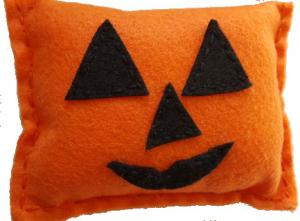
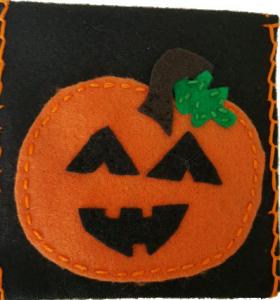
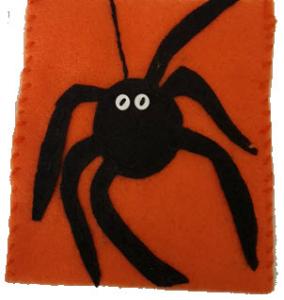

 Laces & Trims
Laces & Trims Patterns
Patterns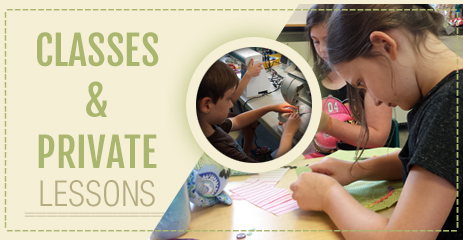
 Books & Magazines
Books & Magazines Dolls
Dolls Galleria
Galleria













